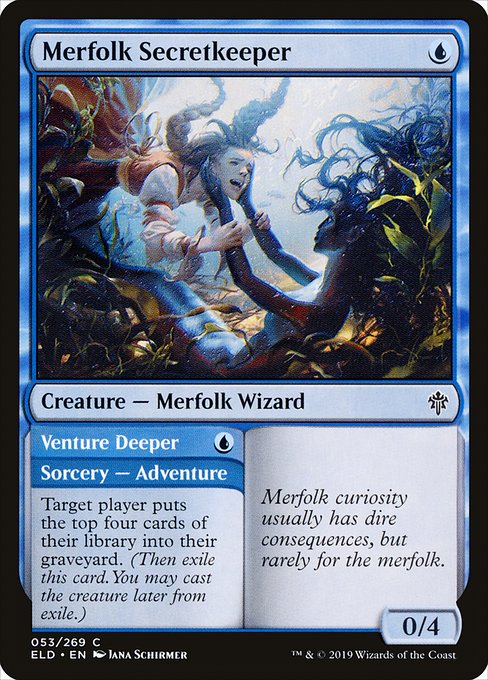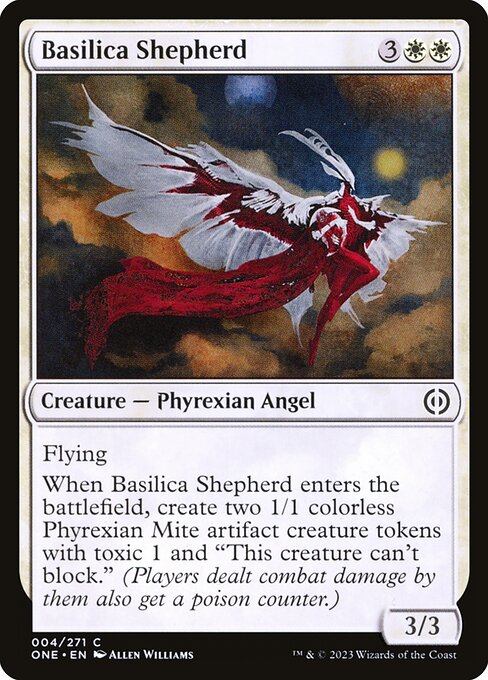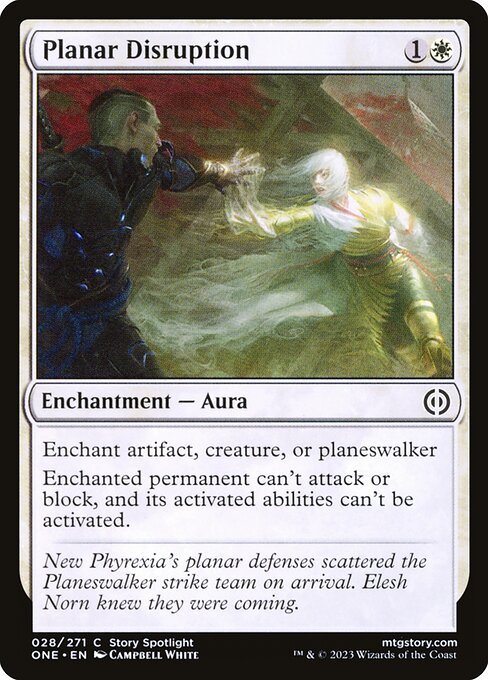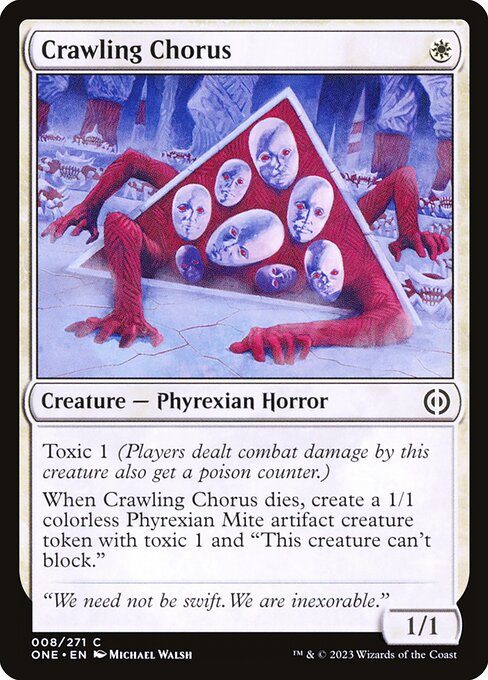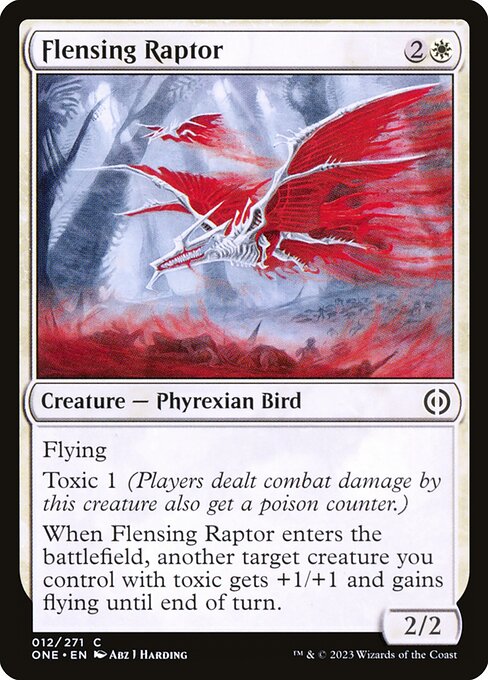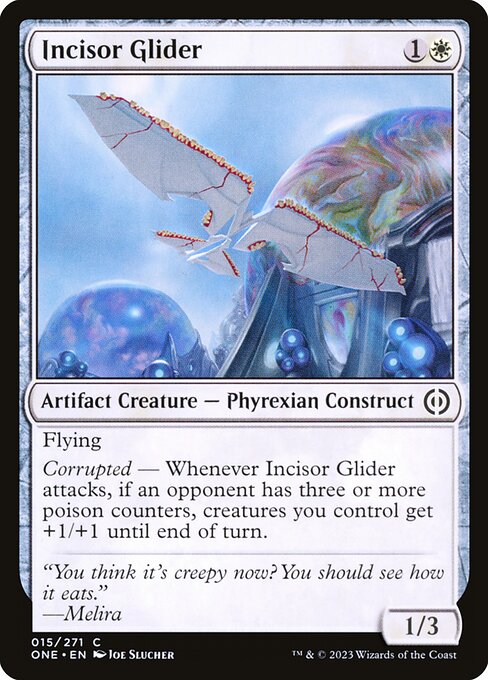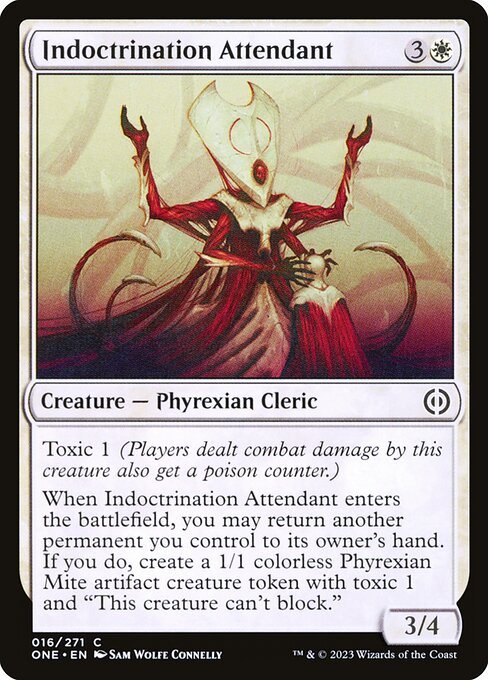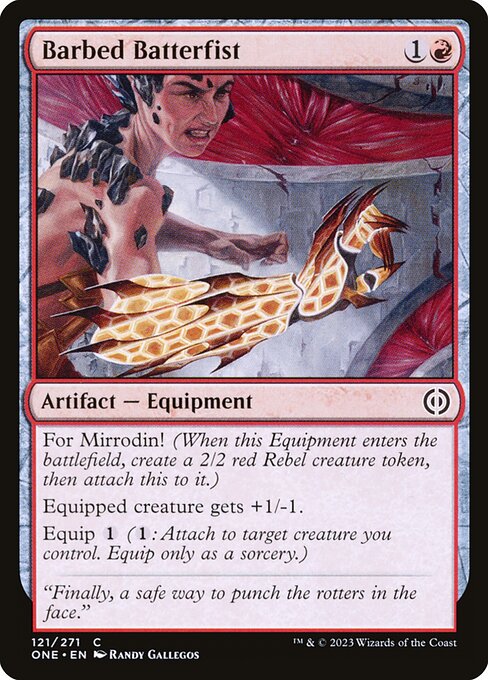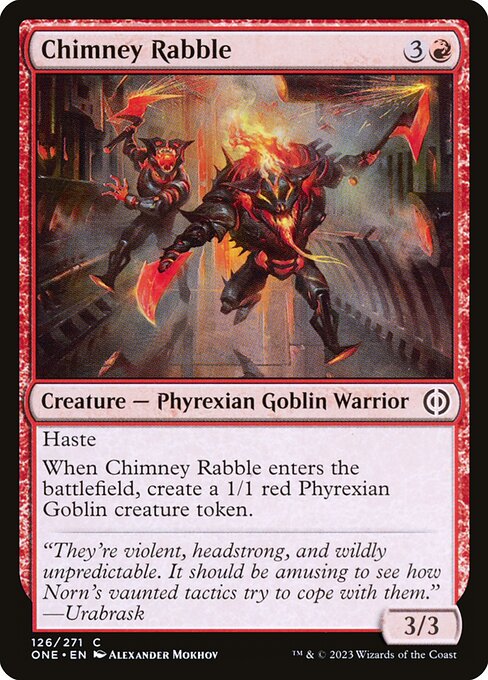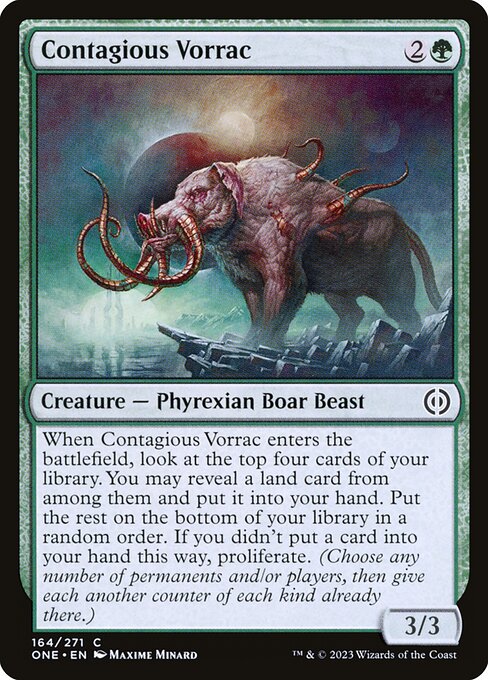Table of Contents
I know what you expect. Me telling you which color is the best thing in Phyrexia: All Will Be One (ONE). But this ain’t it. Or at least not explicitly. Today I will write about what does it mean that something is the best thing in format X, and why often such statements are misleading. They are a necessary short-hand in content creation but are sometimes understood too literally to the detriment of the content consumers. Then, we can dive into the ONE specific examples and look at the “What is best” question from several different angles with some data to back my claims up.
Best now
When you think about it really deep, the best color in draft format is the one that will result in the best possible deck for you in the draft you are currently playing. I know, it is obvious but perhaps so obvious we do forget about it in the long run. We focus on theoretical best scenarios, which cards are the strongest on paper, which are most open on average. But reality is, your current draft is not the average one. It is very specific. And all the other limited-related knowledge and data is there to help you navigate that specific draft. It will arm you with some knowledge, but ultimately, you are on your own with the decisions aimed at maximising the result of that draft.
Sure – sometimes just forcing the most winning color pair will win you the trophy but over many draft this strategy will most likely lower your win rate. Staying open, reacting to what you see during the draft – these strategies will improve your win rate and by a lot. But decisions in a draft should be made in the context of the format and in the context of the what other people are doing on average.
Best in general
Whenever you hear any content creator talking about “what is the best color in the set” they most likely talk about not the raw card power but a combination of power and availability of cards in each color. In the opening weeks of ONE you could hear a lot about Gruul being the strongest color pair. And there is definitely a lot of truth in that statement if you play best of 1 drafts on Arena. But is it due to red and green cards being the strongest? Time to take a look in the trusty data.

Gruul is clearly the color pair that wins the most on Arena. But there might be lots of reasons why a color pair wins the most – not necessarily because its cards are the most powerful. In the ancient times when Arena only had bot drafts, the bots very frequently dictated what was the strongest color pair.
In Thrones of Eldraine, for the first couple of weeks in the format, the blue decks with multiple copies of Merfolk Secretkeeper were a scourge of the format. But an update of bots pick preferences changed that dramatically. WotC manually adjusted how high are Secretkeepers picked and when in the first two weeks you could draft all the copies that were open at the pod, in later format you basically only saw the Secretkeepers that you opened. Result? You couldn’t base your strategy on the card that you need in multiples anymore and the deck became unplayable.
Did the power of Merfolk Secretkeeper change? No. It was exactly the same card. But its availability changed. The power of any card or color combination on Arena will be very dependent on how often is that card/color available. To look at the availability oof best cards in each color we can look at the ALSA metric on Arena. ALSA is when you last see a card in packs. ALSA of 1 means you only see the card when you open it. As the number increases, you see that card later and later in the draft. The metric is reliable to the point where by looking at ALSA you can estimate the probability of wheeling the card – how likely it is that if you don’t pick it, you will see it again when that pack returns to you (see an article on how to do it based on previous sets).
Colors with higher ALSA in their top commons will be more open than the ones with the low ALSA. To see how that lines up in ONE, I looked at the average ALSA of the top 10 commons in each color.

As you can see, White is drafted very highly compared to other colors. Red on the other hand is very underdrafted. This will certainly inflate the win rate of red cards – you are more likely to end your draft with a good red deck as red cards go late, letting you get more playables. On the flip side, in the current metagame, white decks will more often fizzle during the draft. You may have a good start but if the White card dry out, you can struggle with getting enough good playables. But ALSA on its own tells you little about power within the color. I mean without any other knowledge, red commons could theoretically be pretty weak and that is why they go so late in the draft. To get the full picture it is the best to look at both the ALSA and card Game in Hand Win Rate.

As you can see, most red cards have a combination of high win rate and going late in the draft. That means that they are picked incorrectly but a large portion of Arena users – the color is avoided by them, even though it performs well. White commons do as well as the red ones but they do go much earlier in the draft, as we speculated in the earlier paragraph. Interestingly, black goes early and its commons have a relatively low win rate in relation to how high people pick it. This also means that the general community is incorrect – they overpick black compared to its power level. If it was picked lower, its win rate should go slightly up, but for now, it is overdrafted, meaning more sub-standard decks and lower win rates. Blue is doing poorly, even though it is drafted late, meaning that the community evaluated it correctly. Green is an interesting color, where there seems to be a good mix: high win rate cards are picked highly, lower win rate cards go late, meaning it is also correctly evaluated by the Arena users.
Seeing the data, my first question was: why is there such a big gap between the what community picks and what has a high win rate? Looking at the color play rates of 17Lands users, it seems that they evaluate the colors much better than the general population. Red, White and Green are the most played colors, followed by Black and to even lesser extent, Blue. This means that this disproportion is driven mainly by non-17Lands users. The most plausible hypothesis there is, more casual players chase the dream of winning with poison damage. This explains why colors with most toxic cards are overdrafted. A quick check shows that also green cards with toxic are quite overdrafted compared to their win rates. So this format got imbalanced by offering a promise of something unusual, something that lots of less invested players try to chase and in the process disrupt the draft process.
Long introduction, but after looking at all this data, currently on Arena red is the color you should draft the most, because it combines the high win rates with being accessible in the draft. But is it objectively the best color? In my opinion – no.
Best in theory
Looking at all the data, objectively, the best color in ONE is white. Despite being overdrafted, white cards still have same if not higher win rates of all colors. White also offer the highest diversity of strategies. One problem with ONE is that there are lots of card that are mono-colored on paper but in reality perform much better in a particular color combination, making the sort of multicolor.
For example Viral Spawning. It is a great card if you can activate corrupt. But in a red-green deck it is very unlikely making it a Centaur Courser rather that the Call of the Herd it promises to be. And this can be said of many other cards. This makes cards that perform well in multiple archetypes something of a rarity.
I looked at the commons that perform well in multiple archetypes. Only 2 commons in the whole set had a GiH Win Rate higher than 56% in all 4 color pairs they are in. And they are both White: Basilica Shepherd and Planar Disruption.
There are further 9 cards that do well in 3 archetypes. And again, 4 of those are white, 3 are red and there are one of each from black and green.
This means more than half of the universal commons are white. Combine that with doing that despite being overdrafted, still having high win rate – white has a very compelling case for being the objectively best color in the draft. Knowing this will not help you in the Arena draft. At least not for now, possibly later in the format, when poison chasers will stop playing, it can become an important piece of information against players trying to force Gruul decks. So what can help you with drafting on Arena?
Openness
Here is where the concept of openness comes in handy. It is a measure of (shocking, I know) how open are given colors/color pairs on average. I calculate it early for each set. It takes into account both power and availability of good cards and then calculates: how many good cards will you see in each draft on average for each color pair. We know how many of each rarity card we see on average per pod. For commons it is 2.4. Then, knowing ALSA I can calculate how many you will actually see on average. For example, common with ALSA of 4 will be seen by you if it is opened in roughly 12 packs in a given draft, meaning you will see 12/24 packs in the pod, so 12/24*2.4 copies per draft, giving you 1.2 copies per draft on average. Adding up all the cards of each color pair gives us a good impression of where you are the most likely to get a large amount of cards for your deck.

Since the openness shows you power, availability and abundance of cards in the color pair, you need to be careful in interpreting it, but even at a cursory look at ONE, WR and RG look head and shoulders above the rest. You will see over 40 cards with GIH WR over 56% for both of them. WR will have few more cards, but RG has a slightly higher average card power level. The other two color pairs that look slightly open are WB and WG. Other colors look barely open. But this is the average. How you should interpret this graph is that you are likely to be able to draft WR and RG decks consistently. WB and WG, you will need to make sure to look at open lanes, but more often than not you will be able to draft decks in those pairs, while in case of WU and BR you have to be on the lookout and pivot into them when they seem very open. Other colors probably just don’t have enough power in them, thus the low numbers of powerful cards you will see in draft.
Conclusions
As you can see – it is not easy to open which color or which color pair is strong in draft. A lot depends on how open colors are in the metagame you are playing. I can guarantee you that the players who relied exclusively on Arena while testing for the Pro Tour last weekend didn’t do well, if they expected RG to be the best thing to do. Pro Tour metagame was very different from the Arena pick orders so their plans to wheel Chimney Rabbles, as one does on Arena, would never materialize. And card’s power swings wildly as its availability changes. Lesson we learned some time before with the updates of Arena bots that invalidated or enabled some strategies.
But if you are looking to gain some advantage on Arena, data can help. Looking at powerful cards that go late, looking at openness of color pairs lets you position yourself better in the drafts. It also makes having strategies possible. You can try to soft force red and then try to complement it with whichever of green and white looks more open and you will get relatively far with that approach. But whichever strategy you use remember the first point of the article: the best color pair in the current draft is the one that yields the best deck in this particular pod. Other tools will not change that.



